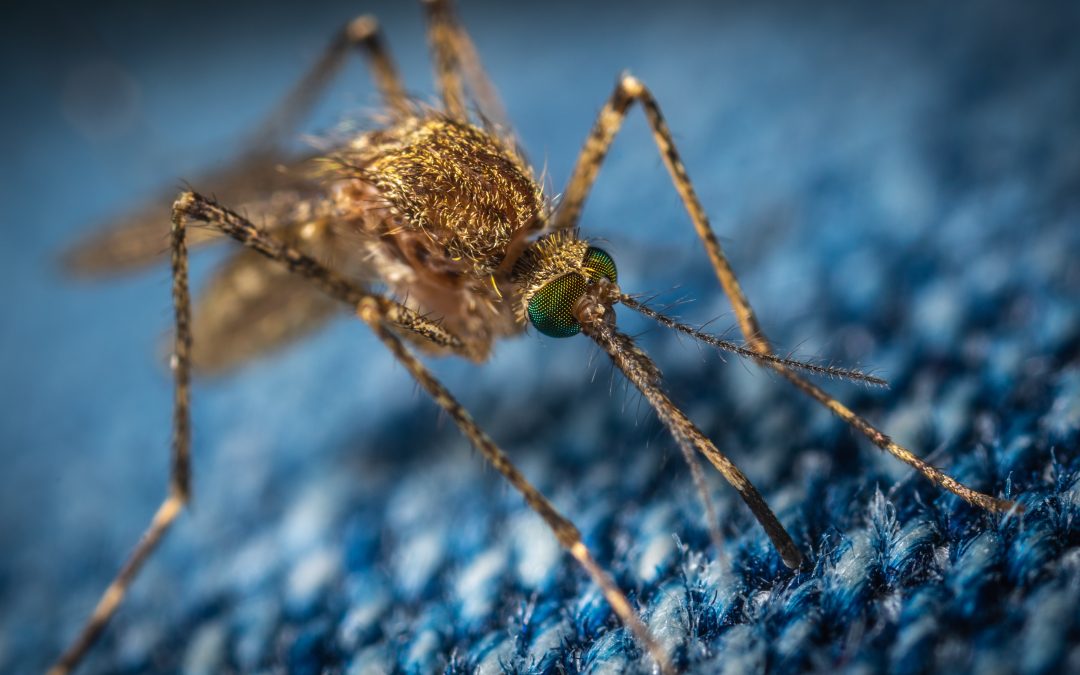According to the World Health Organization (WHO), over half of the world’s population is at risk for malaria. In 2015 alone, the WHO recorded over 200 million cases of malaria worldwide and more than 400,000 deaths. Sub-Saharan Africa shoulders a large part of the burden of this disease. The main parasite responsible for transmitting malaria in Africa is the Anopheles gambiae mosquito. Scientists are looking into ways to curb the A. gambiae population as a means of preventing the spread of malaria.
One of the ways scientists are looking to control mosquito populations involves genetic engineering: gene drives. Gene drives result when researchers can modify a gene (e.g. using CRISPR/Cas-9) that also disrupts the normal processes of inheritance so that all offspring end up with the modified gene as well. This allows the gene drives to rapidly spread throughout a population. If, for example, the genetic modifications result in organisms that are sterile, a gene drive can rapidly crash or even exterminate a population. This could result in a local eradication of a disease-carrying parasite, such as A. gambiae.
A new study experimented with introducing a gene drive into A. gambiae in the laboratory. The researchers divided 1,200 mosquitos into 2 cages. They put three types of mosquitos in each cage: 300 females, 150 normal males and 150 males modified with the gene drive. The gene drive modified the mosquitos so that females with the modified gene behaved like males: they were unable to bite or produce eggs. When the male mosquitos modified with the gene drive reproduced, their offspring had the induced mutation between 96-99% of the time, showing that the gene drive was extremely effective at passing on the mutation (inheritance of a normal gene would be a 50% chance to have the mutation). This allowed the gene drive mutation to spread throughout the entire population in 8-12 generations, rendering all the females sterile and wiping out the entire population.
This study marks the first time that gene drive tests were successful in live mosquitos; previous studies had relied on computer simulations to determine the effectiveness of the drive. A major issue that previous gene drive attempts had was that mutations occurring at the site the gene drive was supposed to be acting upon created an immunity to the genetic modifications. The researchers in this study did note that some mutations at the target site did occur, but none of these mutations created resistance to the effects of the gene drive. However, this was a relatively small-scale lab study. Some scientists believe that larger-scale gene drive efforts in the wild will inevitably run into issues with mutations creating resistance to the drive. The next step in this type of research would be to test a gene drive in a larger (but still confined) space that better mimics natural conditions.
While the possibility of controlling malaria through suppressing the populations of local insect vectors is tantalizing to some, there are some potential pitfalls with a pest control strategy based on genetic engineering. For one, there is a possibility that the gene drive could jump to other species, whether that happens through cross-breeding or another transfer mechanism. The consequences of the gene drive on populations other than the target organism are impossible to predict and could be severe. Additionally, the ecological ramifications of eliminating an entire mosquito species are not known and should not be taken lightly. However, gene drives still represent one of the more promising possible approaches to be able to control the transmission of malaria and similar diseases.
Powers Scientific has been helping advance insect research like this for over 30 years with Drosophila and Small Insect Chambers that are great for applications involving mosquito rearing, such as studies on vector biology, vector-parasite interactions, insecticide susceptibility, vaccine studies, genetic studies, etc. Our chambers have a 15-60°C programmable temperature range, making them flexible for a multitude of applications. The Level 3 chambers are controlled by thermoelectric (Peltier) coolers and come equipped with ultrasonic humidity generators capable of providing up to 80% relative humidity. Programmable digital clock-controlled LED lighting (two lamps are provided) is also included on the Level 2 and 3 models for complete control over lighting conditions in the chamber.
For more information, see our Drosophila and Small Insect Chambers product page, visit our Contact Us page, or call us at (800) 998-0500.

